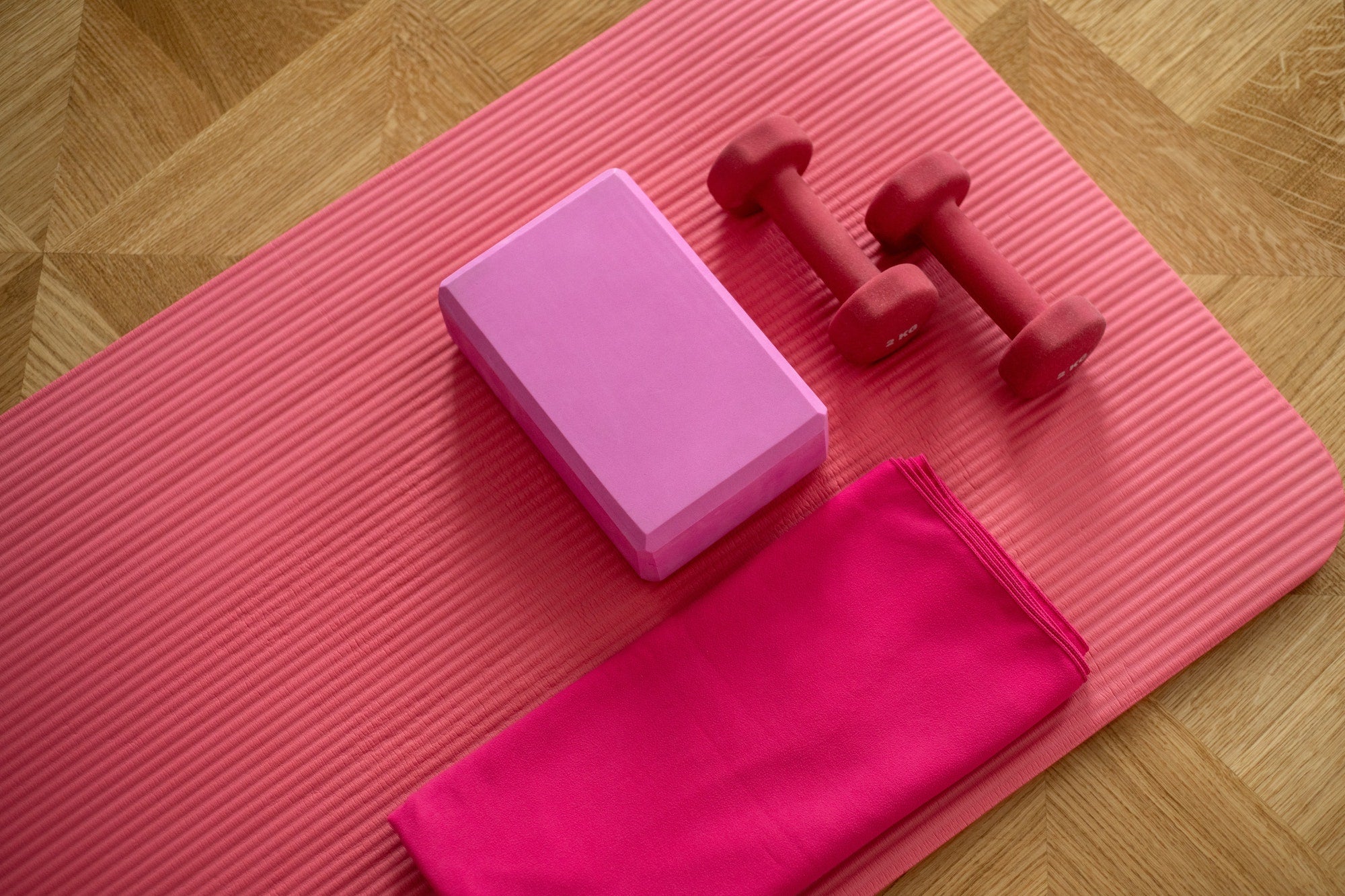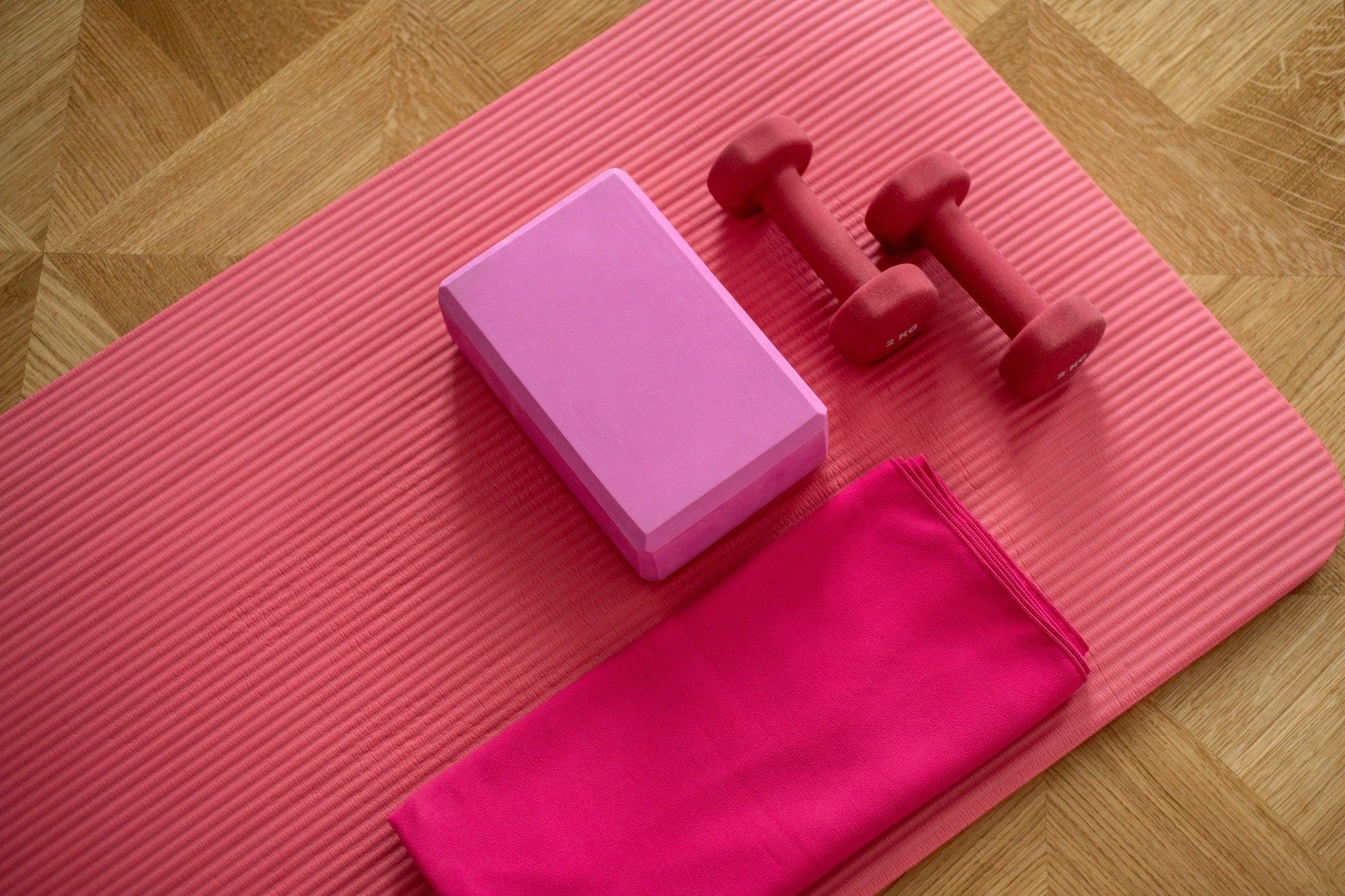Written by: Dr. Amy Beckley, PhD, Founder and Inventor of the Proov test — the first and only FDA-cleared test to confirm successful ovulation at home.
Written on: 6/8/22

Scroll down to learn more about the relationship between exercise and your menstrual cycle!
Understanding your menstrual cycle can inform you as to how much hormones really impact our bodies. One fascinating aspect is the relationship between exercise and hormones.
If you’d like the short answer to your question, “Is exercise good for my period?” The short answer is: yes! But, the essential part is understanding the timing and identifying specific exercises which will ultimately help your cycle and vice versa.
Exercising as it relates to your menstrual cycle can have many benefits such as releasing endorphins, regulating mood swings, and decreasing PMS symptoms.
Keep reading to learn more about how to improve your menstrual cycle and your athletic performance!
Tracking your cycle
The first step with regard to exercising and your menstrual cycle is to know where you are in your cycle. Sometimes tracking your cycle may seem a bit daunting, but here are some easy and quick tips about how to do it and what each phase means.
The menstrual cycle refers to your full cycle, not only menstruation. A typical cycle can last anywhere from 21 days to 35 days. During this time, you have hormones that peak and fall at different times.
Technically, there are 2 different phases of your menstrual cycle, the first is the follicular phase followed by the luteal phase. To make it a bit easier, though, you can split your cycle up into 4 different parts: menstruation, follicular phase, ovulation, and luteal phase. Let’s dive in!
Menstruation
Menstruation, otherwise known as your period, marks the beginning of your cycle which is called cycle day 1. During this time, your uterine lining is shedding and your levels of progesterone and estrogen are very low. On average, a period will last about 5-6 days.
The easiest way to track your cycle is by marking the first day of your period and also noting the last day. That way, you can start counting out those days until your next period to understand your cycle length.
Follicular Phase
As mentioned earlier, your period lies within the follicular phase, therefore this phase lasts from when your period begins, until ovulation. But what exactly happens to your hormones after your period ends?
During your period, the pituitary gland in your brain starts to produce a hormone called FSH (follicle-stimulating hormone).
FSH tells your ovaries to start preparing an egg for ovulation. Once one follicle becomes dominant it produces estrogen as it grows and the estrogen peaks just before ovulation. The follicular phase typically lasts between 10-22 days, however, it may vary between cycles.
During follicular preparation, your estrogen rises and once it gets to a certain level, it will trigger a different hormone called LH (luteinizing hormone). This ultimately leads to that dominant follicle rupturing and ovulation beginning.

Understanding where your hormones peak and fall is essential in exercising effectively!
Ovulation
Ovulation is when a mature egg is released from the ovary after it breaks free from its follicle. The spike in LH helps the egg release. An egg is viable for about 24 hours, therefore if it doesn’t meet with sperm then the egg dies.
In terms of cycle tracking, you may notice ovulation is about to occur if you are experiencing symptoms like tender breasts, mild pelvic or abdominal pain, light spotting, or even a change in your libido! Since a cycle can last anywhere from 21-35 days, not everyone ovulates on the same day. Typically, ovulation will occur about 12-16 days before your next period begins.
Luteal Phase
The luteal phase is the final part of your cycle – it lasts from ovulation up until the start of your period. After ovulation occurs, the follicle that once held the egg that was released during ovulation transforms into what’s called the corpus luteum. The corpus luteum begins to produce progesterone as well as estrogen.
Although estrogen drops right before ovulation occurs, it begins to rise again afterward yet it doesn’t reach as high a level as before. What really rises is progesterone during this time – progesterone peaks about halfway through the luteal phase and then drops again right before your period begins.
These hormonal changes during the luteal phase are associated with most premenstrual symptoms that 3 out of 4 women experience. These include mood changes, bloating, breast tenderness, headaches, appetite changes, and gastrointestinal changes.
The luteal phase typically lasts anywhere from 9 to 16 days. However, if yours lasts less than 9 days, this may be an indication of low progesterone levels.

Work smarter, not harder when exercising during your menstrual cycle.
Exercising and your cycle
Over the past couple of years, there has been research on the connection between the menstrual cycle and exercise. Evidence has been found that hormone levels have a huge impact on muscle development and they also help you adequately divide your body’s energy.
Menstruation
The first couple of days of your period may be uncomfortable due to bleeding, therefore focusing on gentle movements is important. During menstruation, the best exercises to do are those that are low in impact. These include:
- Light walking
- Yoga
- Pilates
- Light cardio
- Low volume strength training
Follicular Phase
Right after your period ends, your hormones are really low therefore working out intensely is best! As your estrogen levels begin to rise, energy does too, so you should take advantage of this time in your cycle and train hard whilst keeping your hormones in mind. High-intensity workouts that you can do include:
- HIIT (high-intensity interval training)
- Powerlifting
- Heavy weight lifting
- Long runs
- Hot yoga
- Boxing
Ovulation
During ovulation, your testosterone levels are at their highest, and estrogen levels are still high, meaning that training can be similar to that of the follicular phase. However, change your workouts accordingly if you experience painful bloating or breast tenderness during ovulation. Some of the best exercises are:
- Rowing
- HIIT
- Running
- Kickboxing
- Biking
Luteal Phase
The luteal phase is when your body is experiencing a hormonal load. During this time, your body temperature rises after ovulation therefore your body may be more sensitive to exercising in hot and or humid environments. This can mean that your athletic performance may decline.
Additionally, the rise in progesterone can increase your resting heart rate as well as breathing rate. These symptoms may make it feel like you are working harder than usual when you are exercising. Furthermore, progesterone may have a catabolic effect on the body, making it harder to repair muscles when the hormone is present.
During this time, the best exercises to do are those that are less strenuous such as:
- Outdoor walks
- Hikes
- Yoga (in a cool room)
- Stretching
Exercising according to your cycle allows you to work with your body, instead of against it. Essentially, working smarter, not harder!
Testing your hormones
As you’ve read, our hormones can have a huge effect on our bodies. Testing and understanding the levels of these hormones can prove to be an even greater benefit to you – whether it’s to improve your athletic performance or improve your cycle.
One of the hormones that have a major effect on our bodies is progesterone. Not only can it change the way our bodies react to exercising and PMS symptoms, but it also can greatly benefit those that are trying to conceive!
Measure the urine marker of progesterone so that you can get a better understanding of your hormones!
If you experience severe symptoms of PMS and it makes exercising difficult during the Luteal phase, you may have low levels of progesterone. An easy and effective way of testing your levels during the luteal phase is by taking a PdG test which measures the levels of the progesterone urine marker (PdG). Taking a PdG test like Proov Confirm allows you to not only know what levels you are at, but also if ovulation occurred!
Understanding your menstrual cycle has incredible benefits and allows you to exercise as efficiently and beneficially as possible. Additionally, knowing your hormone levels enables you to understand your overall health and ultimately how to feel your best, consistently!














